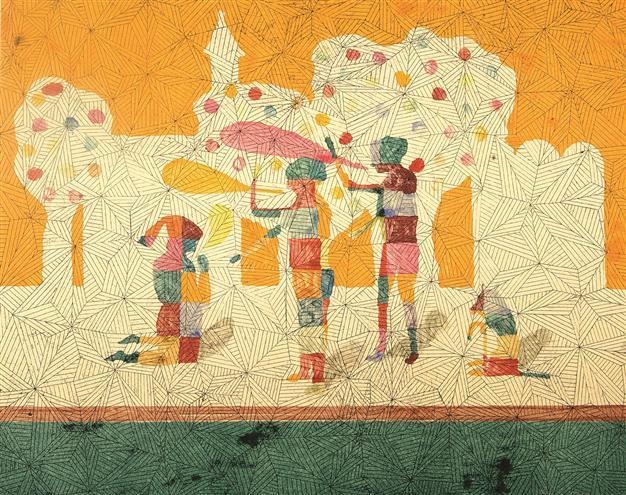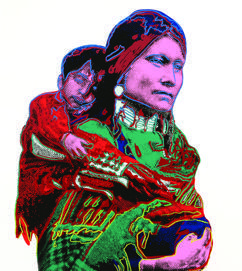Warhol, Chambers at Pera Museum
ISTANBUL

The Martyrdom Of St Ursula 1 Stephen Chambers. The Andy Warhol and Stephan Chambers exhibition will continue until July 20.
The Suna and İnan Kıraç Foundation Pera Museum is hosting two new exhibitions by two masters of the art world: Andy Warhol and Stephen Chambers.Warhol’s selected works from the Zoya Museum Private Collection in Modra, Slovakia, can be seen in the exhibition “Andy Warhol: Pop Art for Everyone.” Included in the show are silkscreen series and drawings exhibited for the first time in Turkey, iconic works such as “Campbell’s Soup,” “Cowboys and Indians,” “Endangered Species” and “Flowers,” accompanied by portraits of well-known important figures.
More than 20 years after his death, Warhol remains one of the most influential figures in contemporary art and culture. His life and work inspire creative thinkers worldwide thanks to his enduring imagery, his artfully cultivated celebrity, and the ongoing research of dedicated scholars. His impact as an artist is far deeper and greater than his one prescient observation that “everyone will be world famous for fifteen minutes.”
In the 1960s the division between highbrow and lowbrow culture was still very marked. It was guarded by the greatest authorities of the day in the field of criticism and aesthetics, Clement Greenberg in America and Theodor Adorno in Europe. Pop Art violated that divide, bringing art closer to everyday life and reiterating the question of the connections between art and life.
It certainly signaled the coming of change, significant change, but in the late 1960s it was hard to say what that change would involve, whether it be simple acceptance of Pop Art as another artistic style, or bringing art out of the cloistered world of highbrow culture.
 ‘The Big Country and Other Stories’
‘The Big Country and Other Stories’Curated by Edith Devaney, Curator of Contemporary Projects at the Royal Academy of Arts, London, presents a survey of British artist Chambers’ painting and graphic works, shown alongside his vast multi-part print, “The Big Country.”
This selection seeks to explore the origins of “The Big Country” (2012), demonstrating that its development is firmly rooted in the artist’s past practice and deeply indebted to the European tradition of art. The sense of a story being told is a feature of many of Chambers’ works, and writings are often a stimulus for this, as seen in Chambers’ Flemish Proverbs series, which are also exhibited.
Inspired by a western film
Inspired by the landscape and scale of the American Western film “The Big Country” (1958), Chambers’ immense work explores a myriad of fictional encounters between real and imagined historical figures.
The notion of the journey and discovery of new lands has here expanded into a depiction of the five continents and the points of departure from one continent to another, raising a fascinating take on the perils and challenges of migration.
The intriguing narratives and powerful atmosphere of exploration and discovery emerge from the deliberately fragmented presentation of this work, forming a technically complex print that seamlessly fuses the analogue and the digital. Chambers’ employment of decorative elements, a flat perspective and fantastical story-telling, highlight the influence that early Italian Renaissance painters, such as Giotto and Uccello, have had on his work.
Chambers is primarily a painter; however, printmaking has always formed a significant part of his work.
He has noted in the past that prints produced by artists whose main discipline is not printmaking, can often be the most compelling. For such artists, printmaking offers another element of expression and provides an opportunity to experiment, a notion which is borne out in Chambers’ finished monumental work.
The exhibitions will be running through July 20.
















